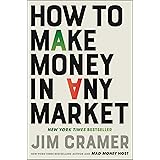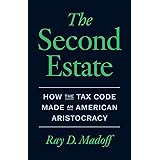With the price of physical gold recently surpassing ₹80,000 per sovereign in some markets, the allure of gold as a stable asset and a hedge against inflation has been significantly reinforced. This remarkable ascent in gold valuations naturally prompts a critical examination of various avenues for gold investment. While the accompanying video insightfully introduces several popular options, a deeper dive into their intricacies, advantages, and disadvantages is warranted for the discerning investor. Understanding the nuances of each investment vehicle is paramount to making informed decisions that align with one’s financial goals and risk tolerance.
The landscape of gold investment has evolved significantly, extending far beyond traditional physical gold. Today, investors are presented with a spectrum of choices, each possessing unique characteristics concerning accessibility, cost, liquidity, and tax implications. This detailed analysis aims to elaborate upon these options, offering an expert perspective on optimizing one’s gold portfolio.
Physical Gold: The Traditional Form of Investment
Physical gold, typically acquired as jewelry, coins, or bars, represents the most conventional form of gold investment. Its tangible nature offers a sense of security and direct ownership. However, this traditional approach is often accompanied by several practical considerations that warrant careful evaluation. For instance, the purity of gold, commonly expressed in karats, plays a crucial role in its market value; 22K gold, often denoted as 916 purity (91.6% pure), is distinct from 24K (99.9% pure) gold used in bars and coins. As indicated in the video, a gram of 22K gold can currently be valued around ₹10,000.
The acquisition of physical gold, particularly jewelry, involves substantial ancillary costs. Making charges and wastage, which can range from 10% to 15% of the gold’s value, are significant deductions. Furthermore, a Goods and Services Tax (GST) of 3% is levied on the total value, including both the gold price and making charges, elevating the overall purchase price considerably. For example, a gram of gold costing ₹10,000 might incur an additional ₹1,000 to ₹1,500 in making charges and another ₹300 in GST, bringing the total cost per gram to between ₹11,300 and ₹11,800. These additional expenses significantly reduce the effective return on investment, especially for short-term holdings.
Upon liquidation, deductions are often applied. When selling jewelry, jewelers typically account for wastage and making charges, which can reduce the resale value by an additional 5% to 10% compared to the prevailing market rate. While physical gold provides a strong hedge against inflation and currency devaluation, its illiquidity and the challenges associated with secure storage, insurance, and purity verification often render it less optimal purely from an investment standpoint. For investment purposes, gold coins are generally preferred over jewelry due to lower making charges and better resale value, mitigating some of these concerns.
Digital Gold: Convenience with a Catch
Digital gold platforms, exemplified by AARAV Gold and integrated options on platforms like GPay and PhonePe, have gained considerable traction in recent years due to their convenience and accessibility. This method allows investors to purchase and accumulate gold in fractional units, as little as one rupee, eliminating the need for physical storage and concerns about purity. The underlying gold is typically stored in secure vaults by the platform provider, with ownership recorded digitally.
Despite its appeal, digital gold is not without its costs. A notable element is the ‘spread’—the difference between the buying and selling price, which serves as the platform’s profit margin. As highlighted in the video, this spread can be around 1% to 2% on buying and potentially up to 1.96% on selling, as seen with AARAV Gold. This price differential, combined with the mandatory 3% GST on purchases, means investors start at a slight disadvantage, requiring a greater appreciation in gold prices to break even. Furthermore, unlike regulated investment products, digital gold platforms operate with varying degrees of oversight, and their long-term regulatory framework is still evolving.
While digital gold offers the option for physical delivery of accumulated gold, this service typically incurs additional charges, such as delivery fees. For instance, a delivery charge of ₹300 was mentioned for in-state deliveries, which could vary for other regions. Investors should carefully consider these transaction costs and the regulatory environment before committing substantial capital to digital gold, particularly if their objective is long-term wealth accumulation rather than short-term convenience.
Gold Exchange Traded Funds (ETFs) & Gold Mutual Funds
Gold ETFs and Gold Mutual Funds represent sophisticated, market-linked avenues for gold investment, offering liquidity, transparency, and cost-effectiveness. Both instruments track the price of physical gold, providing exposure without the need for physical possession. However, they differ in their operational mechanics and accessibility.
Gold ETFs (e.g., Gold Bees)
Gold ETFs, often referred to by their popular name ‘Gold Bees’ (like Nippon India’s Gold Bees), are investment funds traded on stock exchanges, much like equities. Each unit of a Gold ETF typically represents a small fraction of a gram of gold, and its price moves in tandem with the prevailing gold market rates. The video highlights that Gold ETFs have mirrored gold price appreciation, with examples of a 15% rise in gold leading to a proportional increase in ETF unit value.
The cost structure of Gold ETFs is generally favorable for investors. Brokerage fees, especially with discount brokers like Zerodha, can be minimal or even zero for buying and selling. Transaction charges are negligible, as demonstrated by the ₹2.38 for buying and ₹0.38 for selling mentioned in the transcript. However, an expense ratio is charged annually for managing the fund. For Gold Bees, this is typically around 0.08%, translating to a mere ₹80 per year for an investment of ₹1 lakh. While this expense ratio is low, it is a recurring cost that subtly impacts long-term returns. Investors must hold a Demat account to trade Gold ETFs, and transactions are restricted to market hours (Monday to Friday, 9:15 AM to 3:30 PM). Settlements typically occur on a T+1 basis, meaning funds or units are credited the day after the transaction.
Gold Mutual Funds
Gold Mutual Funds, in essence, invest predominantly in Gold ETFs or physical gold. They offer an alternative to direct ETF purchases for investors who may not have a Demat account or prefer a more managed investment approach. These funds are typically purchased through banks or mutual fund distributors, allowing for systematic investment plans (SIPs) and lump-sum investments.
The expense ratios for gold mutual funds are generally higher than those of Gold ETFs, often around 1%, as cited in the video. This means an annual charge of ₹10 per ₹1 lakh invested, plus an 18% GST on this expense. An additional consideration for gold mutual funds is the ‘exit load,’ a penalty charged if units are redeemed before a specified period (e.g., 30 days). This exit load can be around 1% of the redemption value, discouraging short-term trading. While gold mutual funds provide professional management and ease of investment, their higher expense ratios and potential exit loads can marginally reduce net returns compared to direct ETF investments, especially for long-term horizons.
Sovereign Gold Bonds (SGBs): The Government-Backed Advantage
Sovereign Gold Bonds (SGBs), issued by the Reserve Bank of India on behalf of the government, stand out as one of the most attractive options for gold investment, particularly for long-term holders. SGBs are denominated in grams of gold, offering investors exposure to gold price movements without the risks and costs associated with physical storage or making charges. The video notes the unique benefit of SGBs: an annual interest payment of 2.5% on the initial investment amount, which is paid semi-annually. While this interest is taxable, the capital gains upon maturity (after 8 years) are entirely exempt from tax, presenting a significant advantage.
The maturity period for SGBs is 8 years, though premature exit options are available after 5 years. Capital gains on premature redemption are subject to taxation. The minimum investment is 1 gram of gold, with a maximum subscription limit of 4 kg for individuals and 20 kg for trusts. This government-backed instrument ensures the highest level of security and eliminates concerns about purity or storage. The government’s motivation behind launching SGBs was to reduce India’s reliance on physical gold imports, simultaneously providing investors with a safe and rewarding alternative.
A crucial point highlighted in the video is the periodic issuance schedule of SGBs. As of the time of the video recording, no new bonds had been issued since January 2025 (or for the current specified period), indicating an inactive phase for new subscriptions. Investors interested in SGBs must monitor government announcements for new tranches. This unique combination of interest income, sovereign guarantee, and tax-free capital gains on maturity makes SGBs a highly compelling choice for those seeking a secure, long-term gold investment strategy.
Strategic Considerations for Gold Investment
Choosing the optimal gold investment option necessitates a holistic view of one’s investment objectives, time horizon, and risk appetite. For investors prioritizing physical possession and who are willing to absorb associated costs and storage challenges, actual gold jewelry or coins may be suitable, albeit less efficient from a pure investment perspective. For those seeking convenience and fractional ownership for short to medium-term accumulation, digital gold offers accessibility, though its spreads and regulatory landscape require careful consideration.
Professional investors or those with a Demat account often favor Gold ETFs for their liquidity, low expense ratios, and transparency. They are ideal for tactical allocation to gold within a diversified portfolio. Alternatively, Gold Mutual Funds cater to investors preferring a systematic investment approach (SIPs) without needing a Demat account, despite slightly higher expense ratios and potential exit loads. However, for a truly long-term, tax-efficient, and secure gold investment, Sovereign Gold Bonds emerge as the superior choice, combining capital appreciation, guaranteed interest, and tax exemption on maturity. The government’s backing provides an unparalleled level of safety, making SGBs a cornerstone for any serious gold portfolio.











